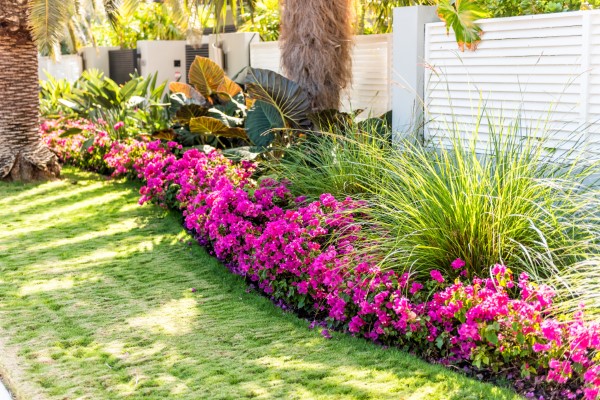Miami is beautiful: surf, sun, blue skies, and tropical landscapes. The temperature is moderate year-round so homeowners can enjoy the out-of-doors more consistently than most other areas of the United States.
The frequent summer showers and occasional thunderstorms keep the foliage lush and the flowers blooming. However, you should be aware that there is still special care that every landscape needs in Miami. With a little planning and attention, landscaping maintenance can be a breeze.
1. Know Your Zone
The Florida USDA Zone Map is what every gardener should refer to before planning their gardens and landscapes. It uses weather data to divide Florida into 7 areas that can be used to show how appropriate a plant is based on how well it can survive in those conditions. Consulting the zone map before making plant purchases can save you countless dollars and endless hours of frustration.
For example, if you live in South Florida where, according to this zone, the average temperature is between 40-45 degrees vs farther north where the temps are between 10-15 degrees, this will make a difference in the types of plants that work well.
Lawn care in colder temperatures as well as drought conditions, (NIDIS), even in Florida, are things to watch for in lawn maintenance and protecting plants from temperature drops at night.
2. Pick Perennials
Plants that only survive for one season are called annuals. They tend to be very showy with bright, vibrant colors. Ignoring them in your landscape would be a shame.
However, they can be expensive to replace every year if you use them in mass plantings. Perennials survive from year to year, getting larger or fuller as they grow and eliminate the need for completely replanting your beds.
3. Watch for Signs of Stress
When your lawn is stressed, it will tell you. Some signs of distress requiring your attention include brown patches, bare spots, and a sudden or increased occurrence of weeds.
There are many reasons your lawn could be crying out for help. It takes a little investigation to narrow down the possibilities but taking the time to find the root cause could be the difference in a few dollars for treatment and the price of a new lawn.
4. Check For Insects
Many insects would love to call your landscape a lunch buffet. If you notice any of the following symptoms, call a lawn care expert for treatment options.
• Dead patches
• Chewed spots and bite marks on the leaves
• Visible bugs on the blades of grass or leaves of plants
• Plants producing malformed flowers or leaves
5. Too Much, Too Little or Just the Right Amount of Water
Overwatering and underwatering can be equally dangerous for your lawn. Too much water can lead to fungal diseases that can completely wipe out a yard if left unchecked. Underwatering or drought can cause the lawn to be brown or die in patches.
Scalping or mowing too close in warm weather can also cause moisture loss. If you notice that the grass doesn’t spring back when you step on it or if it looks faded, it may be telling you it is thirsty.
6. Use Organic Products
Organic products are the safest option for treating your lawn. Organic fertilizers build up soil and encourage healthy growth. Healthy plants are naturally resistant to insects and disease. Natural lawn care options are also safer for the environment.
7. Tend Your Trees
Don’t overlook the importance of tree maintenance. Trim limbs that hang over structures and inspect them periodically for insect damage or signs of disease. Feed them according to recommended schedules. A healthy tree will be more flexible and better able to stand up to strong winds or tropical storms.
The Experts at Plant Professionals Are Here to Help
When you want to create your own tropical paradise in your yard, contact the Plant Professionals. They can answer all your landscape questions and help you design your perfect lawn. Be sure to ask about their full range of products and services.
Image Credit: Shutterstock/Kristi Blokhin

